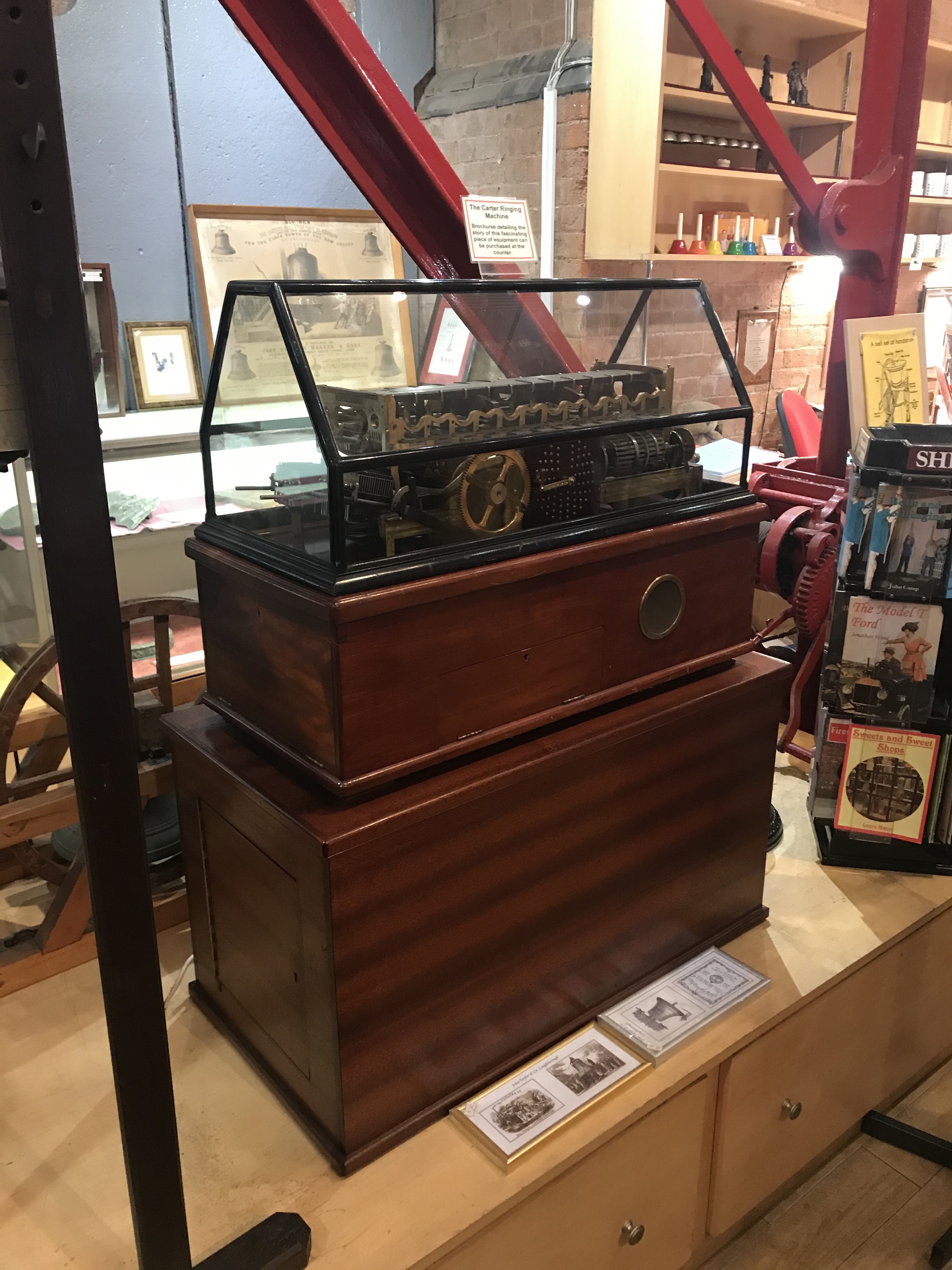Introduction & History
The Carter Ringing Machine was designed and constructed by John Carter over a period from about 1895 to 1925. Initially the machine was designed to ring a collection of bells mounted on top of the machine, with striking being achieved by purely mechanical means. The sound of the machine was poor, due to the small size of the bells and so when it became feasible to do so, Mr Carter redesigned the machine to do the ringing electrically, and a cabinet of bronze handbells was built. The electrical pulses produced by the machine operate solenoids with hammers attached. This produces a much nicer tone, essentially the same as when a team of handbell ringers ring a peal.

Initially the machine was stored in the Science Museum in London. After a period during which the machine was essentially just a static exhibit, and effort was made around 1950 to return the machine to working order and this was achieved and talks and demonstrations were given in the Museum. At some point it became clear that the Museum considered the machine to be a lesser importance and it was relegated to a storage area. At this point it was decided to move the machine to the Science Museum in Birmingham which is close to the area where Mr Carter had lived and worked. After a number of years there it then suffered the same fate and at that point it was moved to the Museum at the Taylor Bell Foundry in Loughborough where it remains.
By Bill Purvis - 24th September 2010
|

